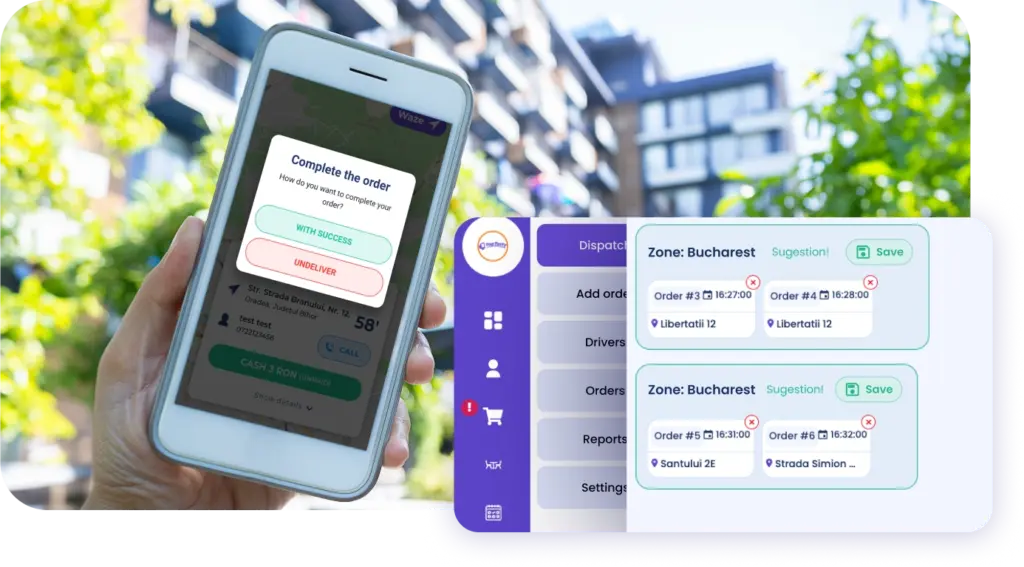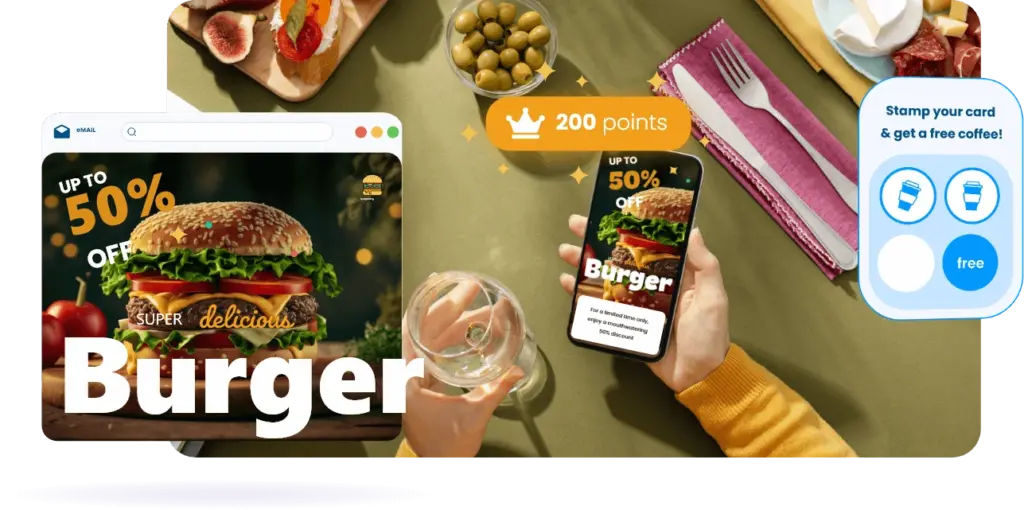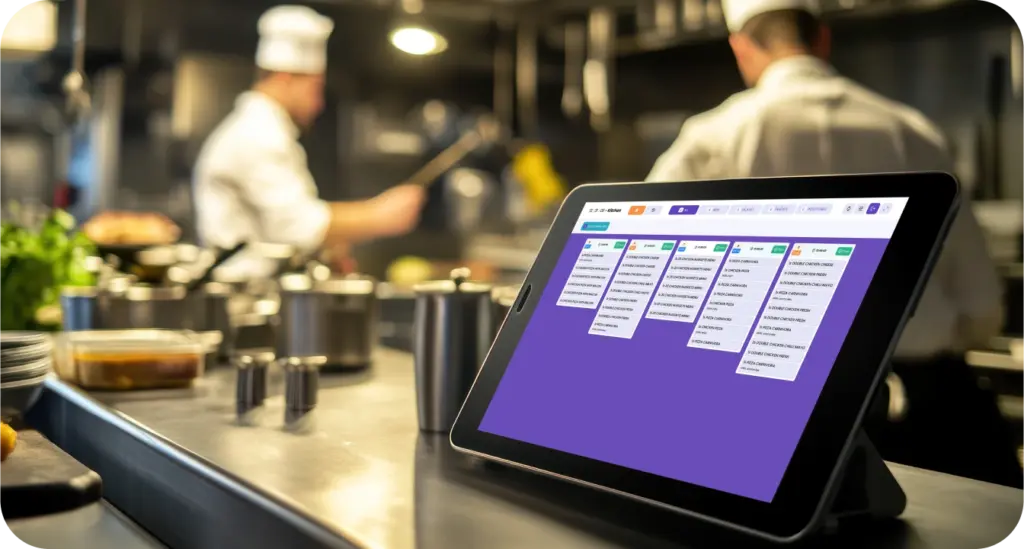All Articles
Essential QSR Technology: Must-Have Innovations for Fast-Food Restaurants

Quick-service restaurants (QSRs), also known as fast-food restaurants, have always prioritized speed, efficiency, and affordability. Unlike full-service dining establishments, QSRs focus on high-volume service with minimal wait times. Customers expect their meals to be ready within minutes, and any delay can negatively impact both satisfaction and profitability. To meet these demands, this type of restaurant has increasingly turned to QSR technology to streamline operations and enhance service.
In recent years, digital innovations—from modern POS systems to mobile ordering apps and self-service kiosks—have transformed how these restaurants operate. The rise of online food ordering, delivery platforms, and AI-driven automation has further accelerated this shift, making technology an indispensable asset in maintaining a competitive edge.
Adopting the right technology is no longer optional for QSRs—it’s essential. The right tools can improve efficiency, enhance customer experience, and boost revenue. In this article, I will explore what makes QSRs unique, the must-have technology solutions every fast-food restaurant should implement, and the key benefits of embracing these innovations.
Understanding the Needs of QSRs
QSRs operate under unique conditions that set them apart from other types of restaurants. The primary driver of success in this industry is speed—customers expect fast, hassle-free service, whether dining in, ordering takeout, or using a drive-thru. Unlike traditional restaurants, where a single table might be occupied for an hour or more, QSRs handle a constant influx of customers who expect their orders to be processed almost instantly.
Beyond speed, order volume is another critical factor. A single QSR location may serve hundreds, if not thousands, of customers daily, making it essential to have systems that can handle high traffic without errors or delays. With the growing trend of digital ordering, restaurants must also manage multiple order channels, including in-person, mobile apps, kiosks, and third-party delivery platforms.
Inventory management is another crucial aspect of QSR operations. Because food waste can significantly impact profitability, QSRs need accurate, real-time tracking to ensure that ingredients are available when needed while minimizing excess stock.
Lastly, customer loyalty plays a key role in the long-term success of QSRs. Unlike fine dining establishments, where customers may visit only on special occasions, fast-food restaurants thrive on repeat business. Offering loyalty programs, personalized promotions, and convenient ordering options can keep customers engaged and returning.
QSR technology that enhances efficiency, improves customer experience, and optimizes operations is necessary to meet these challenges.
Must-Have QSR Technology
In today’s fast-paced fast-food industry, meeting operational demands without QSR technology is nearly impossible. Here’s a quick list of essential restaurant technologies that can help your restaurant stay ahead by streamlining operations and improving efficiency.
- Modern POS Systems

A reliable point-of-sale (POS) system is the foundation of any QSR’s technology stack. Traditional cash registers are no longer sufficient for handling the demands of a fast-paced restaurant. Modern cloud-based POS systems process transactions quickly, integrate with digital ordering platforms, manage real-time inventory, and provide valuable sales analytics.
A good POS system can streamline order-taking, reduce human errors, and ensure a seamless experience across all sales channels. It can also automate discounts, promotions, and loyalty programs, making transactions smoother for customers and staff. This is precisely how TapTasty’s POS can help your restaurant.
- Self-Service Kiosks
Self-service kiosks are transforming the way customers interact with QSRs. These digital ordering stations allow customers to browse the menu, customize their orders, and complete transactions without waiting in line. Since customers input their selections, kiosks speed up service and reduce the likelihood of order mistakes.
Additionally, kiosks can boost revenue by encouraging upselling. Thanks to strategically placed recommendations and promotions, customers who place orders on a digital screen are more likely to add extra items. For restaurants facing labor shortages, kiosks also offer a way to maintain service efficiency while reducing reliance on front-line staff.
- Online Ordering

Mobile ordering has become a standard expectation for QSR customers with the widespread use of smartphones. A branded mobile app or website allows customers to place orders in advance, customize their meals, and pay seamlessly. These platforms provide a smooth ordering experience and enhance customer convenience. Integration with third-party delivery services ensures that customers who prefer home delivery can still enjoy their favorite meals with minimal friction.
Mobile apps are also powerful tools for customer engagement. Features like push notifications can remind customers of promotions, limited-time offers, and special discounts. Additionally, storing order history makes reordering favorites quick and effortless, further adding to the overall convenience.
- Delivery Management System and Delivery App

A delivery management system is essential for restaurants that manage their delivery services. These systems optimize delivery operations by efficiently assigning orders, tracking drivers in real-time, and ensuring timely deliveries. They help restaurants maintain control over the delivery process, reduce errors, and improve customer satisfaction.
A dedicated delivery app for the restaurant’s delivery team provides drivers with real-time navigation, order details, and route optimization. These tools ensure faster deliveries, reduce delays and enhance overall efficiency. By leveraging technology, restaurants can streamline delivery operations and provide a seamless experience for both customers and delivery staff.
- Loyalty and Rewards Programs

Customer retention is just as important as customer acquisition, and loyalty programs are one of the best ways to ensure repeat business. Digital rewards programs allow QSRs to track customer purchases and offer incentives such as loyalty points, discounts, or exclusive promotions. Personalized marketing campaigns based on customer preferences can further enhance engagement.
A well-integrated loyalty program encourages customers to return and provides valuable data on purchasing habits. By analyzing this data, QSRs can refine their marketing strategies, introduce targeted promotions, and improve menu offerings based on customer demand.
- Digital Menu Boards and AI-Driven Drive-Thrus
Static menu boards are becoming obsolete. Digital displays offer a dynamic way to showcase menu items, highlight promotions, and update prices in real-time. These boards can be easily adjusted to reflect availability, ensuring customers never try to order an item out of stock.
AI-powered drive-thru systems are another innovation gaining traction in the QSR space. With voice recognition technology, these systems can take orders quickly and accurately, reducing wait times and improving efficiency. By integrating with a POS system, AI-powered drive-thrus can also offer personalized recommendations based on customer history.
- Kitchen Display Systems (KDS)

Efficiency in the kitchen is just as important as efficiency in the ordering process. A kitchen display system (KDS) replaces traditional paper tickets with digital screens that organize orders in real-time. Staff can see incoming orders instantly, prioritize them based on urgency, and ensure that meals are prepared quickly and accurately.
A KDS improves overall service speed by streamlining kitchen workflows. It also helps prevent mistakes that can lead to customer complaints. It ensures better communication between front-of-house and back-of-house staff, reducing bottlenecks during peak hours.
- QR Code Ordering
QR code ordering revolutionizes how customers interact with QSRs, offering a seamless, contactless ordering experience. With QR table ordering, customers can simply scan a QR code placed on their table using their smartphone, browse the menu, place their order, and pay—all without waiting for a cashier or server. This system enhances efficiency by reducing wait times, eliminating order errors, and streamlining the ordering process.
For restaurants, QR code ordering reduces the strain on front-line staff, allowing them to focus on food preparation and service rather than taking orders manually. Additionally, it encourages upselling by displaying relevant add-ons and promotions directly within the digital menu.
By integrating QR code ordering with POS systems and kitchen display screens, QSRs can improve operational speed, minimize errors, and create a more modern, convenient dining experience for customers.
The Benefits of Implementing QSR Technology
Embracing technology in a quick-service restaurant (QSR) isn’t just about keeping up with trends—it’s about creating a smoother, more efficient operation that enhances both customer experience and business performance. Here are the key benefits of implementing essential QSR technology:
- Faster Service and Reduced Wait Times
Technology such as self-service kiosks, mobile ordering, and QR code ordering speeds up the process, ensuring customers receive their meals quickly and with minimal hassle. - Improved Order Accuracy
Digital ordering systems reduce human errors, ensuring customers get exactly what they ordered. This leads to fewer complaints and higher satisfaction. - Higher Revenue Through Upselling
AI-powered recommendations, digital menu boards, and mobile apps suggest add-ons and upgrades, increasing the average order value without requiring additional staff effort. - Enhanced Customer Experience and Loyalty
Loyalty programs, personalized promotions, and seamless digital ordering keep customers engaged and encourage repeat visits. - More Efficient Kitchen and Front-of-House Operations
Kitchen display systems (KDS) and integrated POS solutions improve staff communication, reduce order bottlenecks, and speed up meal preparation. - Lower Labor Costs
Self-service kiosks, AI-driven drive-thrus, and automation reduce the need for manual labor, allowing staff to focus on food quality and customer service rather than repetitive tasks. - Seamless Multi-Channel Ordering
Integration between in-store, mobile, online, and third-party delivery platforms ensures customers can order however they prefer without disruption.
Final Thoughts: Why Consider TapTasty for Your QSR Technology Needs?
Adopting the right technology is crucial for QSRs looking to stay ahead in an increasingly competitive market. Each solution plays a critical role in improving efficiency, boosting revenue, and enhancing customer satisfaction, from POS systems and self-service kiosks to mobile apps and loyalty programs.
TapTasty is an all-in-one platform designed to boost restaurant sales, streamline operations, and provide powerful marketing tools. Each module works seamlessly together. More than just individual tools, TapTasty is a complete ecosystem where all solutions integrate effortlessly, allowing you to manage everything from ordering to delivery, loyalty programs, and analytics under one roof.
Working with just one company for all your restaurant technology needs simplifies operations, reduces integration challenges, and ensures a smoother workflow. If you’re looking for a seamless way to modernize your QSR, TapTasty provides the tools needed to stay ahead of the curve. Now is the time to invest in your business’s future and embrace the digital transformation shaping the fast-food industry.
 10 February 2025
10 February 2025 6 min read
6 min read

